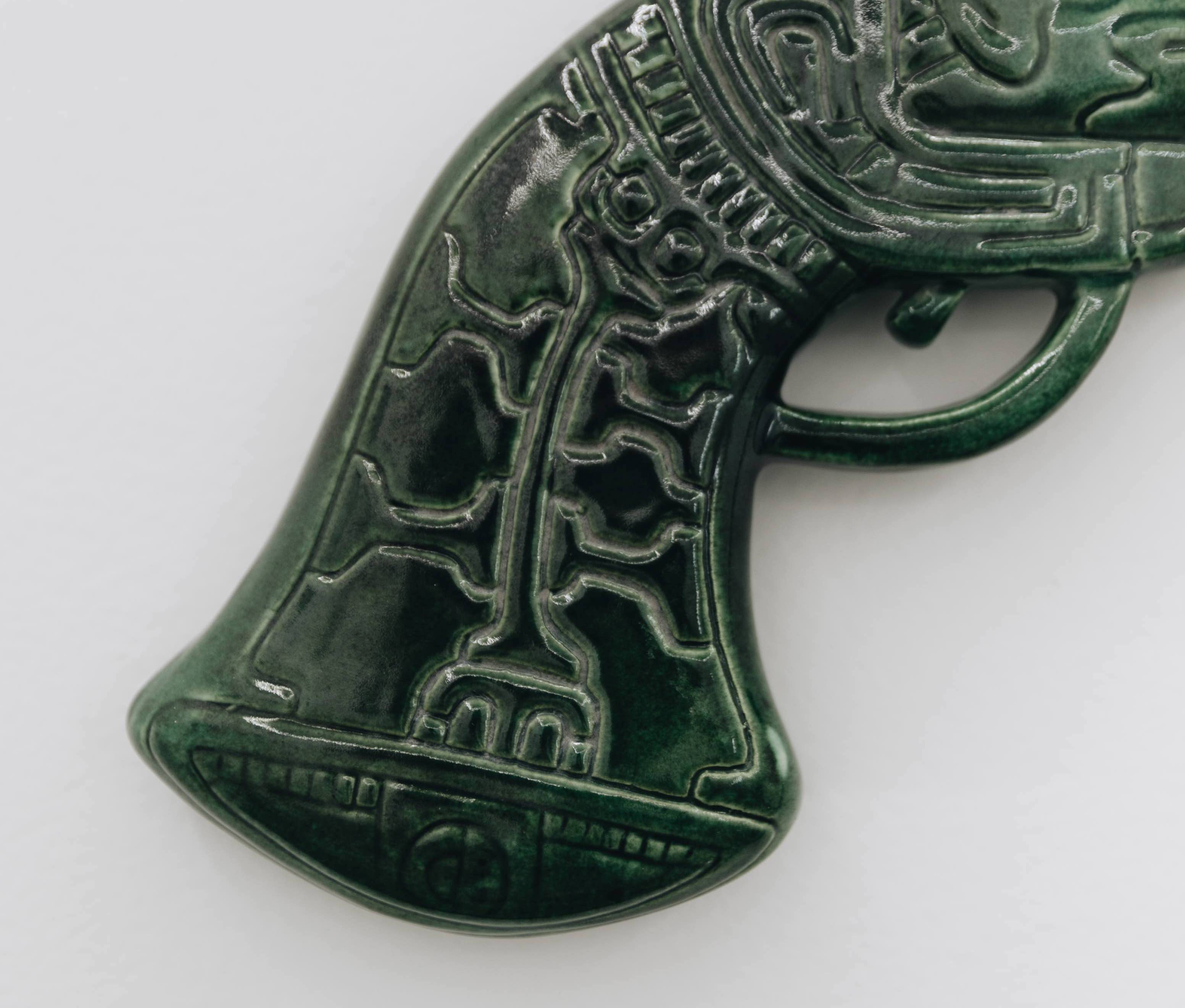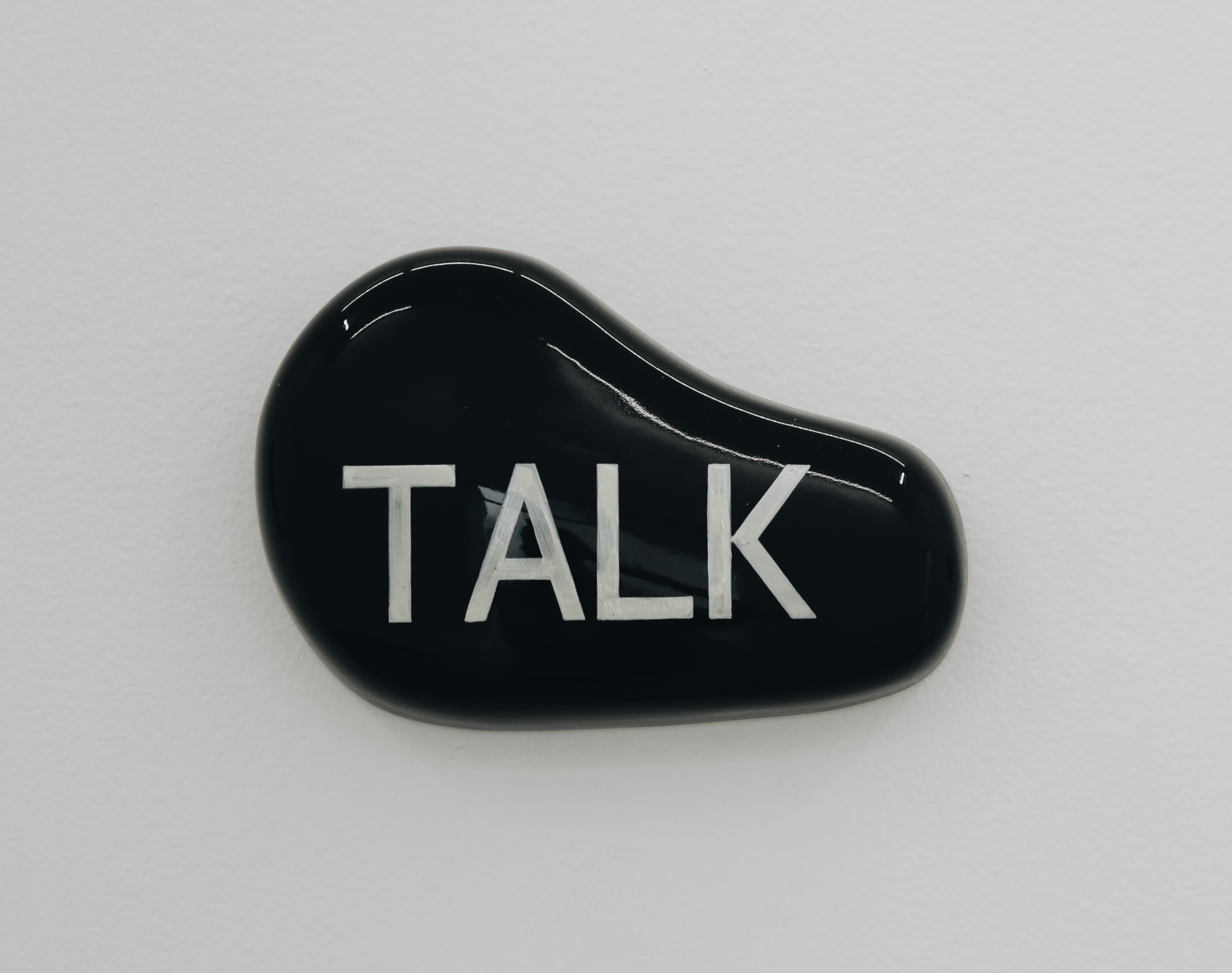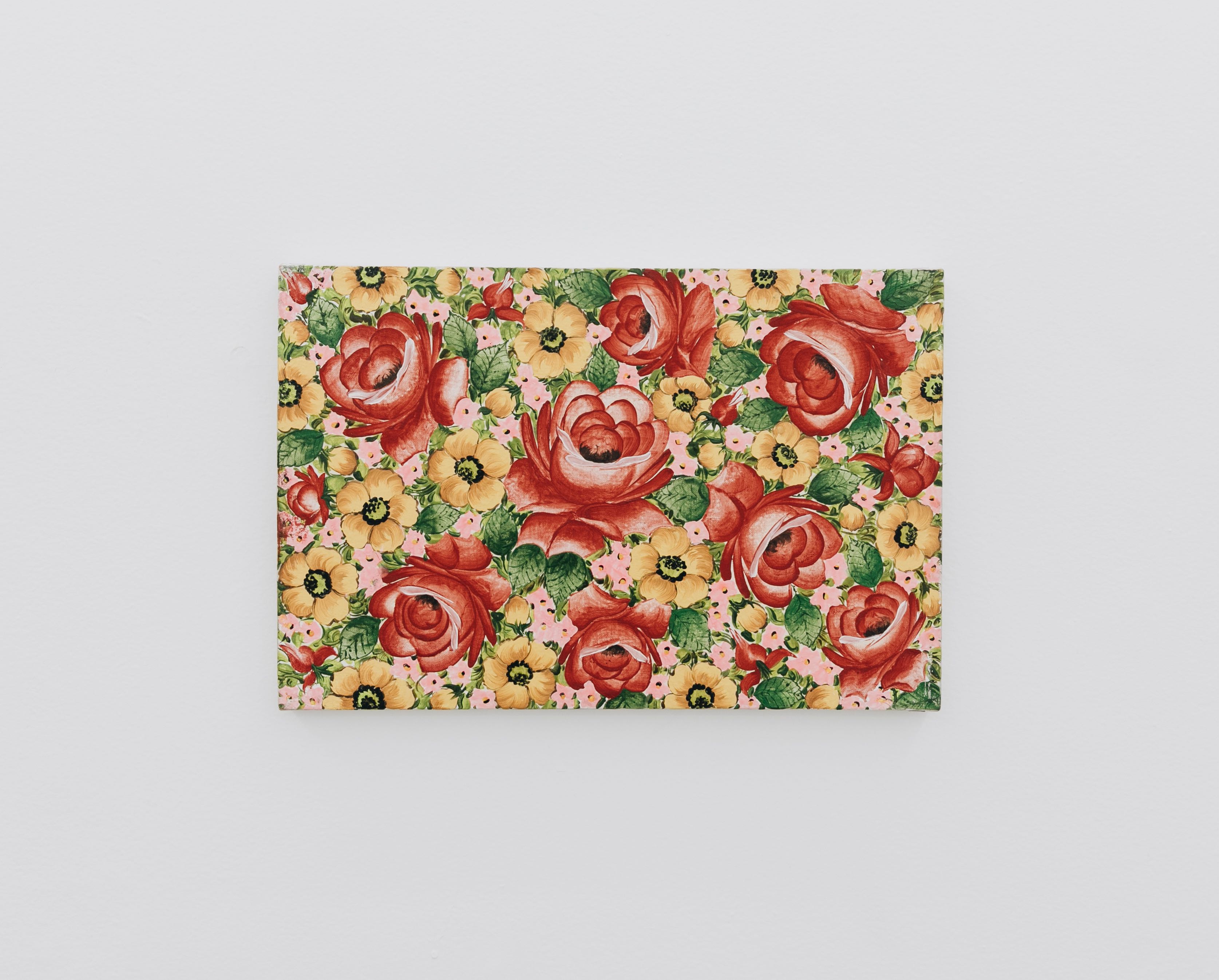
Review
The Invisible Bullets of a Silent Violence. On Luis Miguel Suro
by Nicolás García Barraza
At Galería Enrique Guerrero
Reading time
4 min
Luis Miguel Suro was born in 1972, in Jalisco. He grew up during a period in which capitalism proliferated throughout the world, political turmoil was tremendous, discrepancies in wealth distribution became more significant, and the media became more and more powerful. Much of his work takes an interest in those just-mentioned themes, as well as in the confluence between contemporary art and popular art. The artist’s approach is mainly translated intro ceramics. It’s an attribute inherited from family tradition at the Taller de Cerámica Suro (Suro Ceramics Workshop) in Tlaquepaque, Mexico. Although he also ventures into performance, installation, and intervention.
As a result of a fortuitous friendship with the collector and gallery owner Enrique Guerrero, the artist exhibited in this same space fifteen years ago. Now there emerges a new show that presents the artist’s early projects, all of which remain relevant in view of the country’s current economic and cultural panorama. Suro, with the promise of a young, bright, and effervescent career, created a subtle, daring, and precise body of work regarding violence and its effects on human and cultural relationships. In 2000’s Pull the Button, Suro reinvented a computer keyboard: he isolated the keys in order to present them individually and in ceramic, with terms like “POWER,” “CANCEL,” “MUTE,” “HABLAR” (“SPEAK”), and “PÁNICO” (“PANIC”). This series showed how media were indispensable in a dependent and self-destructive society. Although those buttons have since been supplanted by touch screens, codependency and obsession with social media remain intrinsic parts of human and cultural development. It is challenging to imagine a world without media, just as it is difficult to imagine progress without technology; weapons have a double edge—one side that punctures and pieces, another that seduces and consumes.

The gallery also presents Suro’s last project, 2004’s Flower paintings project, for which he invited Rodolfo Rivera, a constant collaborator in the workshop, who made a series of oil paintings from the floral patterns used as decoration in traditional ceramics. With this project, he offers a reflection on painting’s decorative effects: by interchanging materials, he aims to appeal to interpretations of flowers and nature in the history of arts and crafts. He is also interested in thinking about relations of production, such as the relations between a (unique) handicraft object and the mass production of decorative and design elements.

Another featured piece is 1997's Assassination - Suicide Pistol Series, a series that alludes to the violence that was consuming the country at the time, as well the growing suicide rate. It consists of a group of invented pistols and bullets, which he made in ceramic and decorated with pre-Colombian patterns. The piece acquires even greater power once we know of the unfortunate fate of the artist, who was assassinated while leaving a bank in the city of Guadalajara in 2004. Teresa Margolles took charge of reminding the world of his death with the work 32 años, Levantamiento y traslado donde cayó el cuerpo asesinado del artista Luis Miguel Suro (“32 years, Raising and transferring of where there fell the murdered body of artist Luis Miguel Suro”). The artist moved the tiles from the floor where the crime was committed to an exhibition space, thus displacing the violence, in a manner characteristic of both artists’ work. Suro’s pieces resonate directly in the memory and collective consciousness of a society marred by a growing wave of violence that continues to rot and corrupt the country.


Suro was one more victim; as in similar cases, it has been difficult to find information. The bodies remain as scars that begin inhabiting the cracks in the asphalt, the wastelands, as well as the silences of the fields and of memory. We are surrounded by spirits that were unjustly separated from their families, their friends, their work, and from a dignified future. Yet the words linger; the memories reignite the ghosts. We don’t allow them to leave because they already left earlier than they should have, and, most likely, because keeping them close reminds us of the importance of moving on.
The work of Suro serves as a reminder of the stagnation we suffer: in which the violent is the everyday; terror, sadness, and life come together and dance, not knowing how to move or where to go.
We do not forget them.
There are no anonymous bodies.
Here they all are,
with us,
waiting for answers, waiting for justice.
— Nicolás García Barraza
Translated to English by Byron Davies
Published on June 2 2021